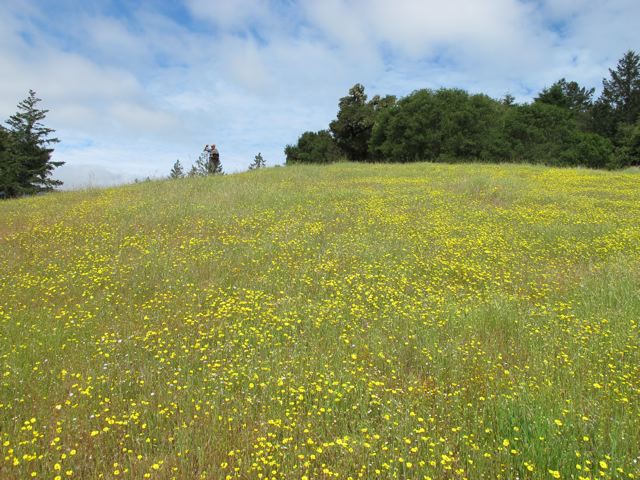With golden summer hillsides and enticing mosaics of forest and field, the grasslands of California are iconic. Yet few people realize that some of those grasslands are actually coastal prairie, one of the most diverse—and most endangered—ecosystems in the world.
Today less than 5 percent of this vibrant habitat remains comparatively intact. Much has been lost to more than a century of fire suppression, development, tilling and invasion by non-native species.
“It’s one of the most biodiverse ecosystems in North America and it’s disappearing under our noses quite rapidly,” says coastal prairie expert Kathleen Kraft.
Ecologists have mounted a campaign to try to understand the prairies, and hopefully preserve what is left. For the last five years a concentrated effort of surveys and mapping has been underway in Marin and Sonoma Counties. And recently a prime example of coastal prairie was protected from development as part of the new Bohemia Ecological Preserve.
There is also a campaign of language underway. The word prairie is powerful in American lore. Derived from the Latin for “meadow,” it was first used in this country to describe the Great Plains. Even today, prairie evokes visions of treeless wildness, of grass and flowers, of great open spaces. Now Californian ecologists have begun to adopt the word to convey the vitality of our own (somewhat smaller) grasslands.
“Saying ‘prairie’ suggests that this ecosystem has a greater diversity than just a big swath of grass,” says biologist Brock Dolman. “We’re trying to evoke a more qualitative definition.”
In spring, a kaleidoscope of blooming wildflowers proves the point that many grassland plants aren’t even grasses at all. California’s coastal prairies are incredibly diverse, with nearly twice as many species as any other grassland in North America, many of which are endangered. During surveys, as many as 70 species could regularly be found in a single 10-meter-square plot.
“It makes redwood forest look like child’s play if you count up species and numbers,” says Dolman.
Not only are there a lot of species, but also many of the perennial grasses are long-lived, Kraft says.
“They are the old growth at our feet,” Kraft says. “We think of grasses as very ephemeral but they’re old.”
Historically, coastal prairies were maintained by disturbance. If left alone, open grassland will gradually revert to forest. But the local prairies survived for tens of thousands of years—kept treeless by wildfire and grazing herds of prehistoric megafauna like mammoths and mastodons. When Native Americans arrived, they deliberately set fires to keep the grasslands healthy.
But California’s beloved golden, rolling hills are actually a comparatively new phenomenon, and a symbol of the decline of coastal prairie and other native grasslands. Most native grass species are much slower to go brown than the annual invasives that have come to dominate the landscape.
“Native perennial grasses tend to green up earlier and say green longer,” biologist Brock Dolman says. “At time of contact these were more like green rolling hills.”


-300x225.jpg)
.jpg)